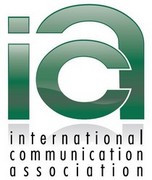Vorträge des Fachgebiets auf der 66. Jahreskonferenz der International Communication Association (ICA) [16.05.16]
Das Team des Fachgebiets ist auf der ICA-Jahreskonferenz 2016 mit einer Pre-Conference und drei Vorträgen vertreten.Pre-Conference
Jens Vogelgesang, Malte Elson, Brian Weeks und Michael Scharkow richten dieses Jahr die ICA-Preconference "Communication Research Methods 2016: Practices & Challenges" aus.
Vorträge
Außerdem werden vom Personal des Fachgebiets zwischen dem 9. bis 13. Juni 2016 auf der 66. Jahreskonferenz der ICA folgende Vorträge gehalten:
Festl, R., Vogelgesang, J., Scharkow, M. & Quandt, T.: Longitudinal Patterns of Involvement in Cyberbullying: Results from a Latent Transition Analysis among Adolescents (Children, Adolescents and the Media)
Abstract: Previous research has shown that adolescents who have perpetrated and experienced victimization play an important role in cyberbullying. However, many studies still lean on conventional, threshold-based classification approaches that often underestimate the connection between the groups. In the present study, latent transition analysis (LTA) using a three-wave panel survey among high school pupils aged 12 to 15 years (n = 1802; M = 13.3 years) indicated five distinct involvement patterns. Apart from a large group of noninvolved pupils (T1 = 81%; T2 = 73%; T3 = 70%), there were four different moderately to heavily involved cyberbullying classes, all characterized by particular patterns of perpetration and victimization. We also found two content-specific forms of cyberbullying: gossiping and insulting. Transition probabilities showed that cyberbullying behavior was relatively stable over time.
Scharkow, M. & Bachl, M.: Messages Mismeasured: Minimal Media Effects as a Consequence of Unreliable Measurement (Political Communication)
Abstract: In the debate on minimal media effects and their causes, methodological concerns about measurement are rarely discussed. We argue that even in state-of-the-art media effects studies which combine measures of media content and media use, measurement error in both the media content analysis and the media use self-reports will typically lead to severely downward-biased effect estimates. We demonstrate this phenomenon using a large Monte Carlo simulation with varying parameters of the content analysis and the survey study. Results show that random and systematic errors in the content analysis and media use variables do indeed lead to smaller effect estimates, especially when the topics of interest are relatively rare, as is often the case in political communication. We discuss these findings as well as possible remedies and implications for future research.
Vogelgesang, J. & Scharkow, M.: Evaluating the Facebook message effectiveness of Top 50 Shanghai Ranking Universities (Public Relations)
Abstract: Social media channels are gaining more importance in PR departments of higher education organizations, which use social media for public relations and alumni relations, among others. The goal of this study is to examine the current practice of publishing Facebook posts by universities. We investigated the effectiveness of different types of content in generating responses such as likes, shares, and comments. Using automatic content analysis, we collected all Facebook posts published between October 2012 to September 2015 by the top 50 universities according to the Shanghai Ranking 2015. Overall, the findings reveal that Facebook posts trigger a very small amount of responses – especially when compared to the overall number of fans per account. However, the findings imply that universities' PR practitioners should carefully consider the media type (status update, link, photo, video) and posting time to secure user responses.


